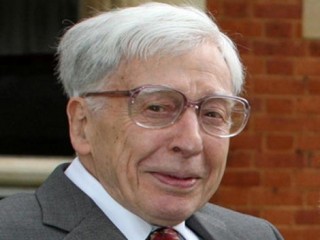
Robert G. Edwards biography
Date of birth : 1925-09-27
Date of death : -
Birthplace : Manchester, England
Nationality : British
Category : Science and Technology
Last modified : 2011-09-27
Credited as : physiologist, vitro fertilization,
2 votes so far
Edwards began his work in the late 1950s, conducting experiments with scientist (and Edwards' future wife) Ruth Fowler, in which they were able to alter the ovulation time in mice. They found that under carefully controlled conditions, dormant eggs that had been removed from mouse ovaries could be brought toward maturation outside the female mouse's body, then reinstalled in the mouse womb to follow normal development patterns.
After obtaining slices of human ovaries from gynecological surgeries, Edwards extracted human eggs and documented the timeline of human egg maturation in his laboratory. In 1969 he accomplished the first fertilization of a human egg outside a human body, and in 1972 he became the first scientist to implant an in vitro fertilized human egg in the womb. He conducted dozens of implantations over several years, yielding no pregnancies, as Edwards and Steptoe tinkered with the hormones and other conditions that could make the procedure lead to pregnancy. A late 1977 implantation led to the birth of Louise Brown, a normal, healthy child, the following summer.
Their work was, of course, extremely controversial. Edwards and Steptoe had their funding denied by the National Institute of Medical Research, and their work was condemned by the Roman Catholic Church and other religious and political leaders as "playing God". Common complaints included the claim that conception is "sacred", or that embryos are entitled to full human rights from the very moment of fertilization, and thus manipulating them is child abuse and discarding them is tantamount to murder.
The offense and outcry faded somewhat over subsequent decades, as in vitro fertilization became almost commonplace in technologically advanced nations. About ten percent of heterosexual couples of childbearing years are medically infertile for a wide assortment of reasons, and Edwards and Steptoe's work has been almost literally a godsend for such couples.
By 2010, when Edwards won the Nobel Prize for Medicine, it was estimated that his work had brought about four million children into previously childless families. He was 85 years old when his Nobel Prize was announced, and suffering from unidentified health problems. A former colleague told reporters that Edwards "is not in a position to understand the honor he has received today", and a Vatican official, Bishop Ignacio Carrasco de Paula, said that any accolade for Edwards is "completely out of order".
Awards and honors:
Commander of the British Empire
Lasker Award 2001
Nobel Prize for Medicine 2010
European Society of Human Reproduction and Embryology Chair, 1984-86
















